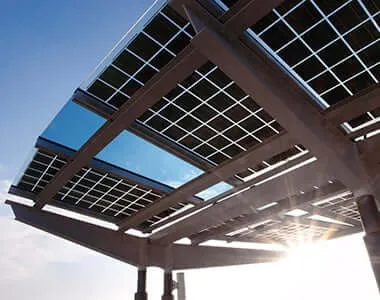Analyzing Solar Panel Performance Trends Throughout Different Time Periods
Solar Panel Output Over Time Understanding Efficiency and Sustainability
As the world shifts towards sustainable energy solutions, solar panels have emerged as a prominent technology in harnessing renewable energy. Their ability to transform sunlight into electricity has made them an essential component of modern energy systems. However, understanding how solar panel output varies over time is crucial for optimizing their efficacy and ensuring the sustainability of solar energy systems.
The Basics of Solar Panel Functionality
Solar panels work on the principle of the photovoltaic effect, where semiconductor materials convert solar energy into electrical energy. The output of a solar panel is primarily influenced by several factors, including sunlight intensity, panel orientation, temperature, and the angle of incidence of sunlight on the panel surface. Understanding these factors is key to optimizing solar energy production.
Temporal Variations in Output
Solar panel output is not constant; rather, it fluctuates throughout the day and across different seasons. During peak sunlight hours — typically between 10 a.m. and 2 p.m. — solar panels can generate maximum electricity. Conversely, during early mornings and late afternoons when sunlight is less intense, the output is significantly lower. Additionally, seasonal changes can drastically affect output. In many regions, summer months yield higher energy production due to longer days and increased sunlight.
The Impact of Weather
Weather conditions play an essential role in solar panel efficiency. Cloud cover, rain, and snow can inhibit sunlight exposure, thereby reducing energy output. However, it’s important to note that modern solar panels can still generate electricity under cloudy conditions, albeit at a reduced capacity. For instance, during overcast days, solar panels can operate at around 10-25% of their maximum potential, which underscores their resilience as a power source.
solar panel output over time

Long-Term Performance and Degradation
Over time, solar panels experience performance degradation, typically ranging from 0.5% to 1% per year. This gradual decline impacts the total output over the lifespan of the panel, which can exceed 25 years. Regular maintenance and cleaning can mitigate some losses, ensuring that panels work efficiently for longer periods. Manufacturers provide warranties that often cover the first 25 years of operation, but it is vital for consumers to understand the long-term implications of performance degradation and factor this into their energy planning.
Technological Advancements
Recent advances in solar technology have significantly improved efficiency and output. Innovations such as bifacial solar panels, which capture sunlight from both sides, and the integration of energy storage systems allow for better management of solar energy. These technologies enable users to store excess energy generated during peak production times for later use, ensuring a more stable energy supply.
Future Outlook
The future of solar energy is promising, with ongoing research aimed at enhancing the efficiency of solar panels and their output over time. As technologies evolve and more people adopt renewable energy solutions, the understanding of solar panel output will continue to grow. This knowledge is crucial for maximizing energy production, financing solar projects, and ultimately contributing to the global transition towards a sustainable energy future.
In conclusion, while solar panel output is influenced by a multitude of factors that vary over time, advancements in technology and a clearer understanding of these elements are paving the way for more effective solar energy utilization. As we continue to embrace renewable energy, solar panels will play an increasingly central role in our quest for a sustainable and greener planet.
-
Unlocking Energy Freedom with the Off Grid Solar InverterNewsJun.06,2025
-
Unlock More Solar Power with a High-Efficiency Bifacial Solar PanelNewsJun.06,2025
-
Power Your Future with High-Efficiency Monocrystalline Solar PanelsNewsJun.06,2025
-
Next-Gen Solar Power Starts with Micro Solar InvertersNewsJun.06,2025
-
Harnessing Peak Efficiency with the On Grid Solar InverterNewsJun.06,2025
-
Discover Unmatched Efficiency with the Latest String Solar InverterNewsJun.06,2025







